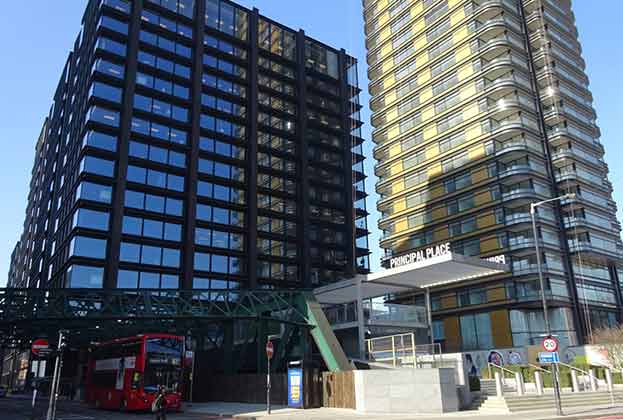Mixing business and real estate principles: Andrew Skinner, UK Valuations, Savills, investigates whether there is a fair value risk for flex space
Prior to the pandemic, some of the direct investment being undertaken in the flex sector by landlords was perceived as a response to the threats posed by the serviced providers who had recognised the opportunity to become aggregators of demand through the concept of space as a service. This could be argued to be a necessary reaction of landlords having to disrupt the disruptors.
We are now seeing a rising number of landlords seeking to launch and expand their own flex models directly and our landlord flex survey identified that over half of landlords are likely to consider using management agreements. Evidence suggests that the relationship between landlords and tenants is maturing, as landlords acknowledge the importance of flex space in providing choice to existing tenants and adding a layer of amenity and vibrancy to their schemes. It is clear that the accelerated leasing benefits, both within a building and across their estate, are also being recognised by landlords. Our landlord flex survey supports the case that in the wake of the pandemic, landlords are increasingly accepting that a flexible component is essential for creating a successful office ecosystem, from large occupiers who require grow-on space for specific project work, to fast-growth start-ups who plan to expand their office footprint over a short time period.
The value of the flex component is ultimately influenced by investor sentiment towards this type of offering. Over the last decade or so a number of approaches have evolved for the valuation of serviced offices, including the split yield approach and the discounted cash flow approach. The former specifically enables us to identify the quality and value of the underlying office asset, whilst also recognising and reflecting the operational platform performance metrics of the business and trading potential. The valuation approach assesses tranches of income and reflects the different risk profiles of each tranche, including a 'top slice' created by the adaption of the property as a flexible office. The DCF method is increasingly being used and the attraction is the commonality of the approach with other operational asset classes. It is also a useful approach when assessing the value of non stabilised investments.
These valuation models emerged largely to assess the value of serviced office centres for operators. The majority of the debate with investors however has been around the covenant strength of serviced office providers and parent guarantees. With operators going through well-publicised portfolio rationalisation programmes and entering into lease regearing and surrender discussions with landlords this nervousness will not go away any time in the near future.
With increased direct landlord investment and co-investment today in flex across their estates, the question of value is becoming more important. The increasing use of management agreements is a good starting point for a fair value discussion as we are seeing a visible shift by operators away from traditional leases towards management agreements. A management agreement in the flexible workspace sector is a revenue and profit share model between an owner of an asset and an operator of the asset. Typically the owner will provide the capital for the operator to fit out the asset, the operator then sells and manages the office space to deliver an income stream for the asset, which following costs, is then split between the owner and operator. There are however many different variations of a management agreement, although they can be broadly bucketed into one of three structures – traditional base rent and profit, hybrid operational models that use priority returns and finally full operational partnerships.

As with management agreements in the hotel sector, the best agreements are those that strike a sustainable balance between the risk profile of the landlord and rewards the operator for strong performance over the longer term, both in terms of turnover and profit.
For landlords, a well-structured management agreement, in the right building and location, would be expected to deliver a higher income than what they might receive as a headline rent for the asset. It also allows them to benefit from the premium that a flexible space operator can charge and presents an opportunity to leverage the brand and expertise of an operator. This can be reflected in the underlying investment value.
The hotel sector has proven over time that the management agreement model can work for both the owner and operator and we expect this to also become the case for the flexible office market with Covid-19 facilitating a shift in perception. From a valuation perspective, it is therefore critical to understand the dynamics of the varying types of management agreement structures and the impact each has on landlord returns. Termination rights, CapEx repayment, future capital costs, typical management fees and the nature of the waterfall calculation on the landlord's longer-term returns are also important to consider.
Data analytics is essential to allow suitable benchmarking of income, costs and profit margins. This is in turn gives greater confidence when assessing the underlying investment value of a management agreement. Conversely, a lack of understanding of this operational partnership model does present fair value risk. The DCF model and tiered approach are all suitable valuation techniques for management agreements but need to be applied correctly depending upon the circumstances. Where the level of flex is a minor percentage of the overall investment income, a traditional category yield approach can also be used if the overall investment dynamic is understood.
The suitable approach to the valuation of CAT A+ and plug and play transactions is now also commonly raised. This is a more simple investment metric as the occupational terms are similar to a traditional lease. The divergence is around the rent with a premium or additional charge for the fit-out and services provided. The level of premium is not only driven by the services and fit out provided but is also market-driven. Whilst the approach to value needs to be investor driven it is clear that the income can be capitalised during the term with the cap rate determined by the covenant quality. A well-structured agreement should therefore result in a positive return on capital.
The uncertainty at present in relation to the valuation of plug and play transactions relates to whether such deals will become so common practice that we are able to build in an element of permanent income for services and fit-out in our valuation cash flows, with a reciprocal allowance for depreciation or future CapEx investment. This is the approach now being adopted for BTR investments with furnished apartments and also follows the approach seen in the hotels market. We are not at this stage yet and until the market evolves there will however remain some uncertainty over which approach will become the norm. However, in the short term, the main attraction for landlords considering plug and play transactions will continue to be the accelerated tenant demand and marketability picture.
Without data and transactional activity, there is always a risk that the value of flex will be mispriced. This has previously led to a lender reluctance to lend beyond the underlying vacant possession value. However, operational driven properties are increasingly prevalent within well-diversified investment portfolios (BTR, hotels, student, factory outlets etc.) and we expect landlords to increasingly recognise the benefits of a more direct relationship with tenants. Will the topical question in the office sector then become – does flex result in a premium, or is there a discount if no flex is provided, similar to the discussions around 'green premiums' and 'brown discounts'?
Read the articles within Spotlight: UK Flex Office Perspectives below.


.jpg)




.jpg)




